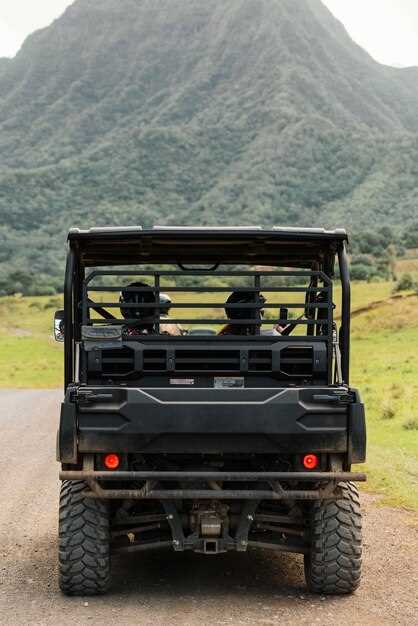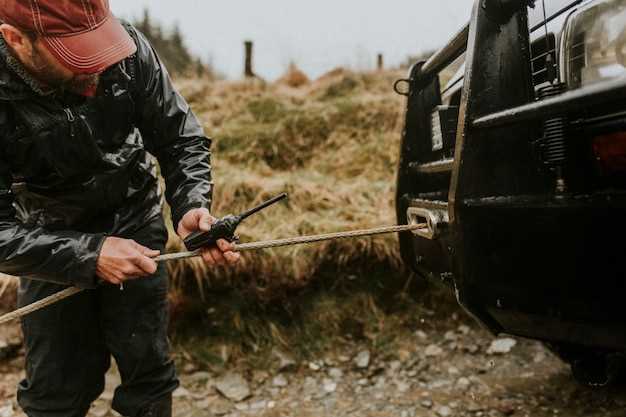
The Toyota Land Cruiser is renowned for its rugged durability and exceptional off-road capabilities, making it a favorite among adventure enthusiasts. To enhance these characteristics, installing a lift kit can significantly improve performance, providing the necessary clearance for larger tires and better suspension travel. This article explores the top lift kits available for Land Cruiser off-road projects, allowing owners to elevate their vehicles for any terrain.
When choosing a lift kit for your Land Cruiser, it’s essential to consider various factors such as the type of off-road driving you plan to do, the weight of any additional gear you’ll carry, and your specific aesthetic preferences. A well-designed lift kit not only boosts ground clearance but also enhances handling, stability, and articulation on challenging trails.
In this guide, we will outline the best lift kits on the market, detailing their features, advantages, and compatibility with different Land Cruiser models. Whether you’re planning a weekend getaway in the wilderness or tackling more extreme terrains, the right lift kit can transform your Land Cruiser into a formidable off-road machine.
Choosing the Right Lift Kit Height for Your Off-Road Needs

When selecting a lift kit for your Land Cruiser, height is a crucial factor that directly influences your off-road capabilities. The right lift height not only affects your vehicle’s stance but also enhances ground clearance, approach and departure angles, and overall performance on rough terrains.
Here are some key considerations when choosing the appropriate lift kit height:
- Intended Use:
- If you plan to tackle extreme off-road trails, a higher lift (4 inches or more) may be beneficial to navigate obstacles.
- For moderate off-road enthusiasts, a lift of 2 to 3 inches might suffice, providing better ground clearance without compromising daily drivability.
- Tyre Size:
- Conversely, the lift height affects tyre fitment. Taller lifts allow for larger tyres, improving traction and stability on uneven surfaces.
- Be aware that significant tyre upgrades may necessitate a higher lift to prevent rubbing during articulation.
- Weight Considerations:
- Your vehicle’s loadout–such as winches, bumpers, or roof racks–adds weight, which may require additional lift to maintain optimum ground clearance.
- A well-balanced lift helps keep your suspension in check, leading to improved handling and off-road performance.
- Center of Gravity:
- Excessive lift height can raise your vehicle’s center of gravity, increasing the risk of rollovers in challenging conditions.
- Consider a moderate lift height–approximately 3 inches–for a blend of ground clearance and stability.
- Budget and Compatibility:
- Lift kits vary widely in price, and the height often correlates with cost. Determine your budget before making a decision.
- Ensure that your chosen lift kit is compatible with your Land Cruiser model to avoid installation issues.
Ultimately, the right lift kit height caters to your specific off-road needs and desired performance. Balancing lift height with intended use, weight, and centre of gravity will enhance your Land Cruiser’s capabilities while ensuring your safety on and off the road.
Installation Tips and Considerations for Land Cruiser Lift Kits

Installing a lift kit on your Land Cruiser can significantly enhance its off-road capabilities, but it requires careful planning and execution. Here are some essential tips and considerations to ensure a successful installation.
1. Choose the Right Kit: Before starting the installation, ensure you select a lift kit that suits your specific off-road needs. Consider factors such as the type of terrain you’ll be tackling, desired lift height, and compatibility with other modifications.
2. Gather Necessary Tools: Having the right tools on hand is crucial for a smooth installation process. Common tools include a jack, stands, wrenches, and torque specifications. A comprehensive toolset can save time and avoid frustrations during the installation.
3. Follow Manufacturer Instructions: Each lift kit comes with its own set of installation guidelines. Always refer to the manufacturer’s instructions for proper installation procedures, as overlooking any step can affect performance and safety.
4. Prepare for Alignment: After installing the lift kit, a wheel alignment is necessary to ensure that your Land Cruiser handles correctly on and off the road. Misalignment can lead to uneven tire wear and decreased performance.
5. Inspect Suspension Components: While installing a lift kit, take the opportunity to inspect existing suspension components. Look for signs of wear and replace any damaged parts to enhance off-road performance and safety.
6. Consider Additional Modifications: Depending on your lift height, you may need to make additional modifications. This could include adjusting driveshaft angles, upgrading shocks, or reinforcing other suspension components to accommodate the extra lift.
7. Know Your Limits: If you are not confident in your mechanical skills, consider hiring a professional for the installation. Proper installation is crucial for off-road reliability and safety.
8. Test Thoroughly: After installation, take your Land Cruiser for a test drive on various terrains to evaluate the lift kit’s performance. Listen for unusual noises and check for any changes in handling. Address any issues before heading out on serious off-road adventures.
By paying attention to these tips, you can maximize the benefits of your lift kit, ensuring your Land Cruiser is ready for challenging off-road encounters.
Evaluating the Best Lift Kit Brands for Durability and Performance
When considering lift kits for your Land Cruiser, durability and performance should be at the forefront of your decision-making process. Off-road adventures demand that your vehicle can withstand harsh terrain, and the right lift kit can enhance both its capabilities and longevity.
First, identify brands that are renowned for their exceptional engineering and quality materials. Brands such as Old Man Emu, ARB, and Bilstein have established a reputation in the off-road community. They provide extensive testing results that indicate how well their kits perform under extreme conditions.
Next, consider the types of materials used in the construction of the lift kit. High-strength steel and advanced aluminum alloys typically offer better resistance to corrosion and wear. Kits that utilize polyurethane bushings are also favored due to their durability and ability to absorb shocks effectively.
Performance also depends on the ease of installation and the compatibility of the lift kit with your vehicle. Look for brands that provide comprehensive instructions and support resources, as this can save time and ensure a proper fit. Additionally, examine customer reviews and case studies that showcase real-world applications, specifically how the kit performed during off-road excursions.
Lastly, warranty coverage is a critical factor. Brands that stand behind their products with solid warranties demonstrate confidence in their durability. Choose lift kits that offer extended warranties, as this often indicates a manufacturer’s commitment to quality and customer satisfaction.
